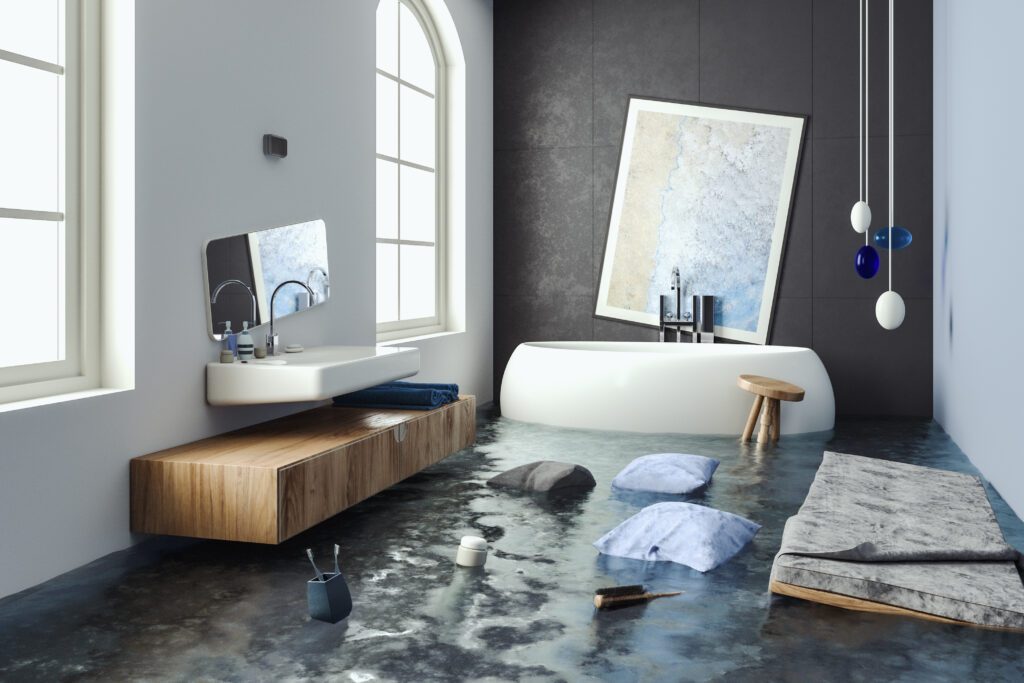Water damage can occur from a variety of sources. From leaks in pipes to overflowing toilets, water damage can wreak havoc on your home. Fortunately, there are ways to detect water damage before it becomes too severe.
A Five-Point Checklist For Water Damage In The Bathroom
If you suspect something wrong in your bathroom, follow these checklists:
Dampness Or Mildew On The Walls And Ceilings
If you notice mildew or dampness on the walls and ceiling, this indicates that there has been some water leakage. For example, a burst pipe could cause that or if the toilet overflows. If you see any signs of mould, call a professional immediately. Mould can cause respiratory problems, especially asthma or other allergies. It can also lead to health issues when inhaled.
A Slight Smell Of Wet Wood Flooring
Another sign of water damage is the musty smell of wet wood flooring. It is usually found near sinks, tubs, showers, toilets, and washing machines. If you find this smell, it’s best to have it checked out right away. It may indicate that there was a leak somewhere in your house.
Mold Growth On Surfaces
Mould growth on surfaces indicates that moisture has been present for quite some time. It could mean a leak in the plumbing or a broken appliance. Call a professional to remove the mould as soon as possible. When mould grows, it releases spores into the air, triggering respiratory illnesses such as bronchitis and pneumonia.
Deteriorating Paint
Paint deterioration is another indicator of water damage. For example, if you notice peeling paint on the wall or ceilings, you should inspect it. Peeling paint is a sure sign of water damage because the surface underneath is damaged.
Swollen Drywall
Drywall is made up of several layers. One layer is called the “core”, which holds everything together. Another layer is the “skin,” which covers the core. If the skin gets damaged, it swells up like a balloon. If you notice swelling drywall, you should contact a professional right away.
Water Damaged In The Bathroom
Checking water damage in your bathroom isn’t always easy. Luckily, you can do things to help you spot the signs.
-
In Bathroom Walls:
Bathroom walls aren’t as important as you might think, but they are essential. They protect you from outside elements and keep your bathroom safe. However, if you see any cracks or holes in them, it could be a sign of water damage. So it would help if you fixed those quickly so that no one else gets hurt.
-
In Your Shower:
Your shower is one of the often-used rooms in your house. Unfortunately, it’s also one of the most vulnerable areas. If you notice any leaks around the showerhead, check the pipes and ensure they aren’t leaking. Also, check for any cracked tiles or mould growing inside the shower. If you find any of these things, get a professional to come out and take care of it.
-
In Bathroom Ceiling:
If you notice any discolouration or mould growing in your bathroom ceiling, it could result from water damage. Spots on the ceiling could be a sign of a small leak. Make sure to look at all ceiling areas, including the corners. If you notice anything, call a professional right away.
-
In the Bathroom Floor:
The bathroom floor is often overlooked when it comes to home repairs. However, it’s an area that needs special attention. If you notice any cracks or stains on the floor, it could be a warning sign of water damage. Make sure to clean up spills immediately. If you see any watermarks on the floor, it’s time to call a professional.
-
In Toilet Bowl:
Toilets are prone to problems, especially if they haven’t been appropriately flushed. If you notice any clogs or other issues with your toilet, it could be a symptom of water damage. Check your toilet bowl and flush lines for any signs of leaks. If you notice anything unusual, call a plumber immediately.
Many different factors can cause water damage in the bathroom. From a simple leaky pipe to a burst pipe, there are plenty of ways that water can enter your home. So be careful where you place water-filled containers, and remember to turn off the faucet before leaving the room.







